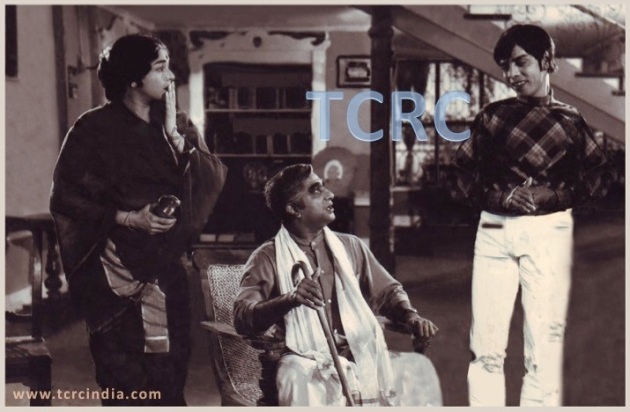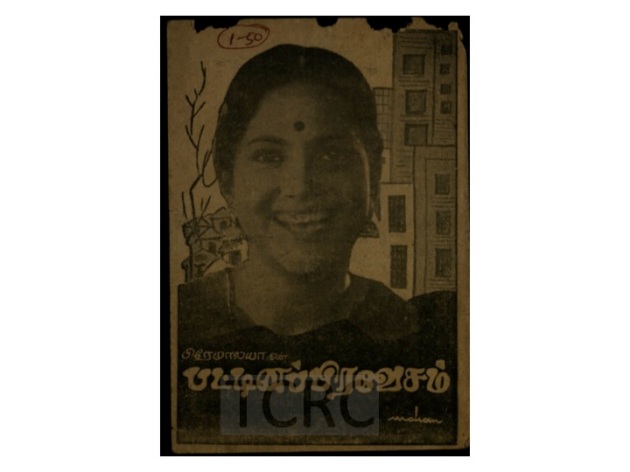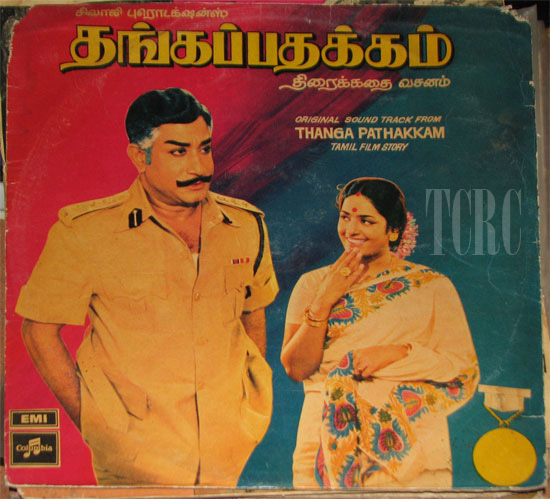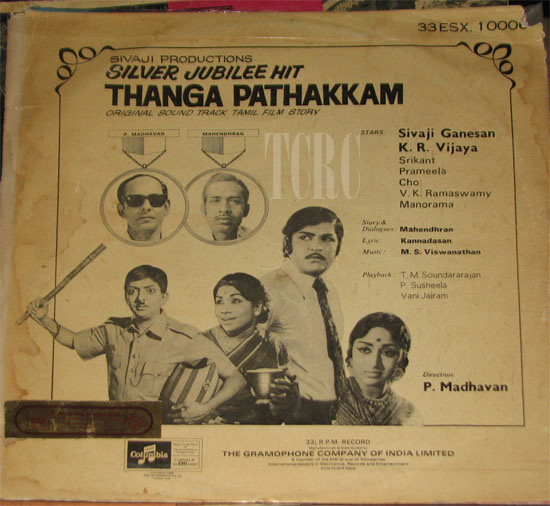By Karthik Bhatt

Song book of Major Chandrakanth PC: From the archives of TCRC
‘Major’ Sundarrajan was one of Tamil cinema’s most well-known character actors. His dialogue delivery which mixed English and Tamil phrases was sophisticated and unique and rather unsurprisingly, he was the first choice when it came to portraying characters such as a rich father. For someone with no connection to the armed forces whatsoever (he was employed with the Telephones Department), his identity as ‘Major’ Sundarrajan was came about thanks to Major Chandrakanth, the successful stage play and movie.
Tamil cinema over the years has seen many directors who can be considered trendsetters. One of the biggest names in the list is that of Dadasaheb Phalke awardee, late Kailasam Balachander. Born in Nannilam in 1930, Balachander developed a keen interest in Tamil theatre at a young age and as a boy used to write, act and direct small skits in his village. He moved to Madras around 1949-50 after graduating from the Annamalai University and a brief stint as a teacher and joined the Accountant General’s office. It was around this time that the amateur theatre movement, which would see its heydays in the 1960s and 1970s had started to take roots, with the likes of United Amateur Artistes, Triplicane Fine Arts Club, Mylapore Fine Arts and Indian National Artistes (run by VS Raghavan) regularly performing to packed audiences. Added to this were the recreation clubs of the various Government and private sector offices. The Accountant General’s office had an active recreation club and soon K Balachander started becoming part of the theatre circuit, writing and acting plays.
‘Major’ Chandrakanth was born in the Accountant General’s office. A new Accountant General from Bengal had taken charge in Madras and a function had been organised to welcome him. The mantle of writing a play to be staged on the occasion fell on K Balachander, who decided that it had to be in English to ensure that the Accountant General understood the play. The story, titled “Courage of Conviction” revolved around a blind Major. K Balachander played the role of the protagonist and received great appreciation for his authentic portrayal of a blind man’s mannerisms.
K Balachander decided to expand the play into a full length script for Ragini Recreations, the troupe that had been formed by his friend PR Govindarajan (later Kalakendra Govindarajan) in 1958. By this time he had developed close friendships with people such as S.Raman (later more famously known as ‘Nair’ Raman), Harikrishnan, ISR and Venky. They were an integral part of the plays staged by the troupe. Over the next few years, the troupe would attract the likes of Nagesh, Major Sundarrajan and Sowcar Janaki, making it one of the most formidable ones on the amateur theatre circuit.
The story of ‘Major’ Chandrakanth dealt with an honest and morally upright blind army officer who gives asylum to a murderer on the run from the police for having killed a person in a fit of rage. The victim had been his sister’s lover, who had cheated her on promise of marriage leading to her suicide unable to bear the shame. On the case to find the murderer is the Major’s elder son, a police officer. It then comes to light that the person who had been murdered was the Major’s younger son and that both the Major and the murderer were unaware of each other’s identity for a long time. The story ended with the officer arresting the murderer and the Major for having harboured a criminal.
The role of the Major was played by Sundarrajan, who was then performing small roles with the Triplicane Fine Arts, while that of the elder son was played by Venky. Govindarajan donned the role of the younger son. Interestingly, the character of the sister was an invisible one with only references to her being made onstage and was developed into a full length role only in the movie, while the brother’s character was played by Gokulnath. The play was a stupendous success and before long, it had been adapted into a movie. The adaptation was in Hindi, the movie Oonche Log. Produced by M/s Chitrakala Films and directed by Phani Majumdar, it won the Second Prize in the Hindi movies category at the 13th National Film Awards for the year 1965. It was Feroz Khan’s first major hit, where he held his own against veterans such as Ashok Kumar (who played the Major) and Raaj Kumar. The Tamil version of the movie was produced by AVM Productions and came out the following year. Directed by K Balachander himself, the movie was a stupendous hit.
The play led to two other christenings. Venky, who was then employed in the American Consulate was named Srikanth after the character by K Balachander. He would go on to feature in several other plays and movies by Balachander and become a popular actor in the 1960s and 1970s. A decade or so later, Balachander gave the name of the younger son’s character to a person who today is the country’s biggest superstar, Rajinikanth.









